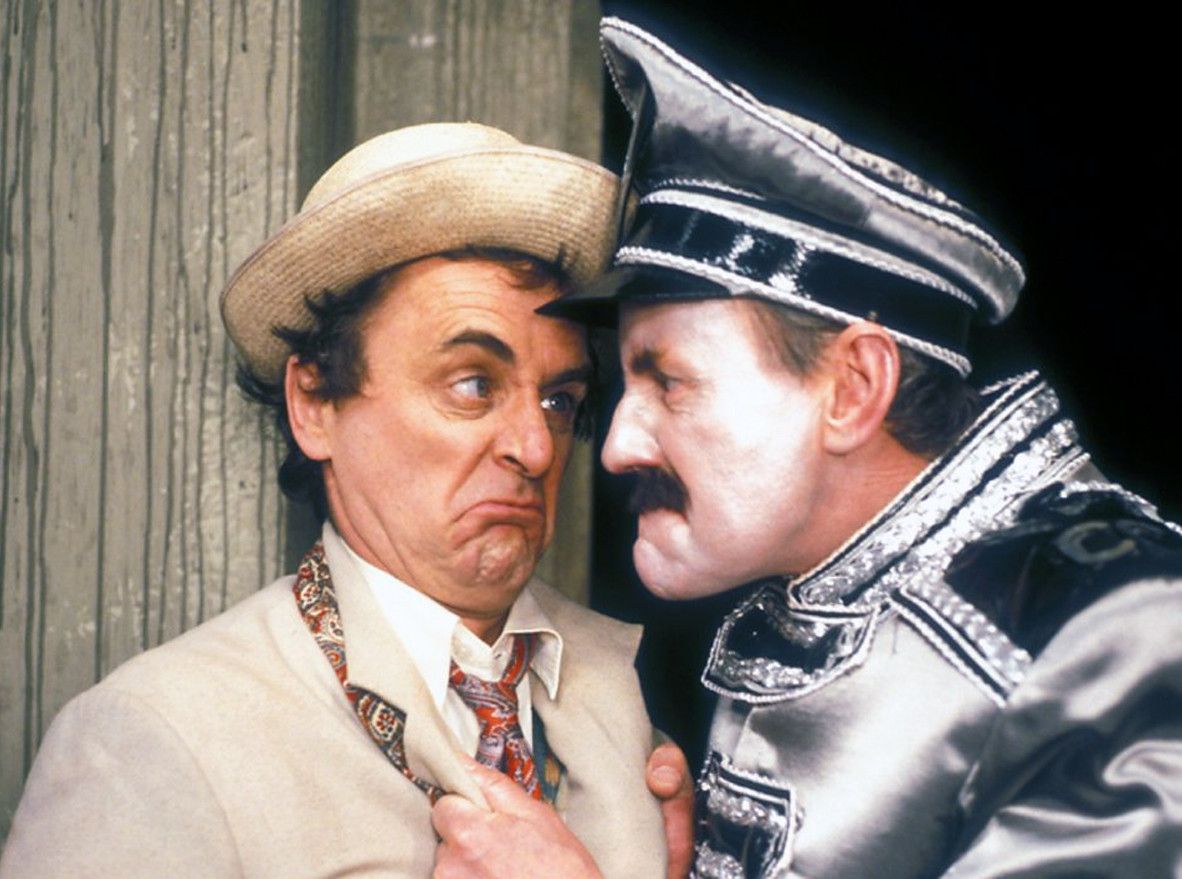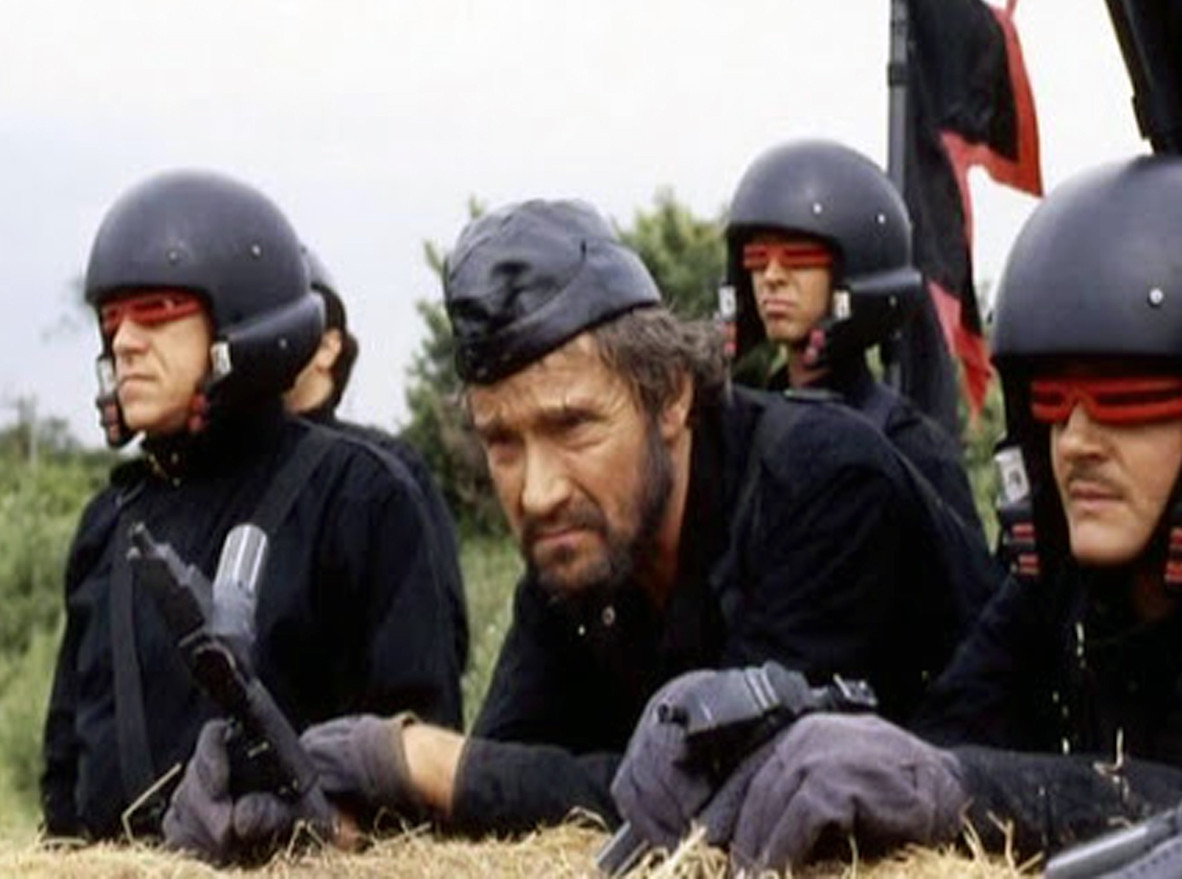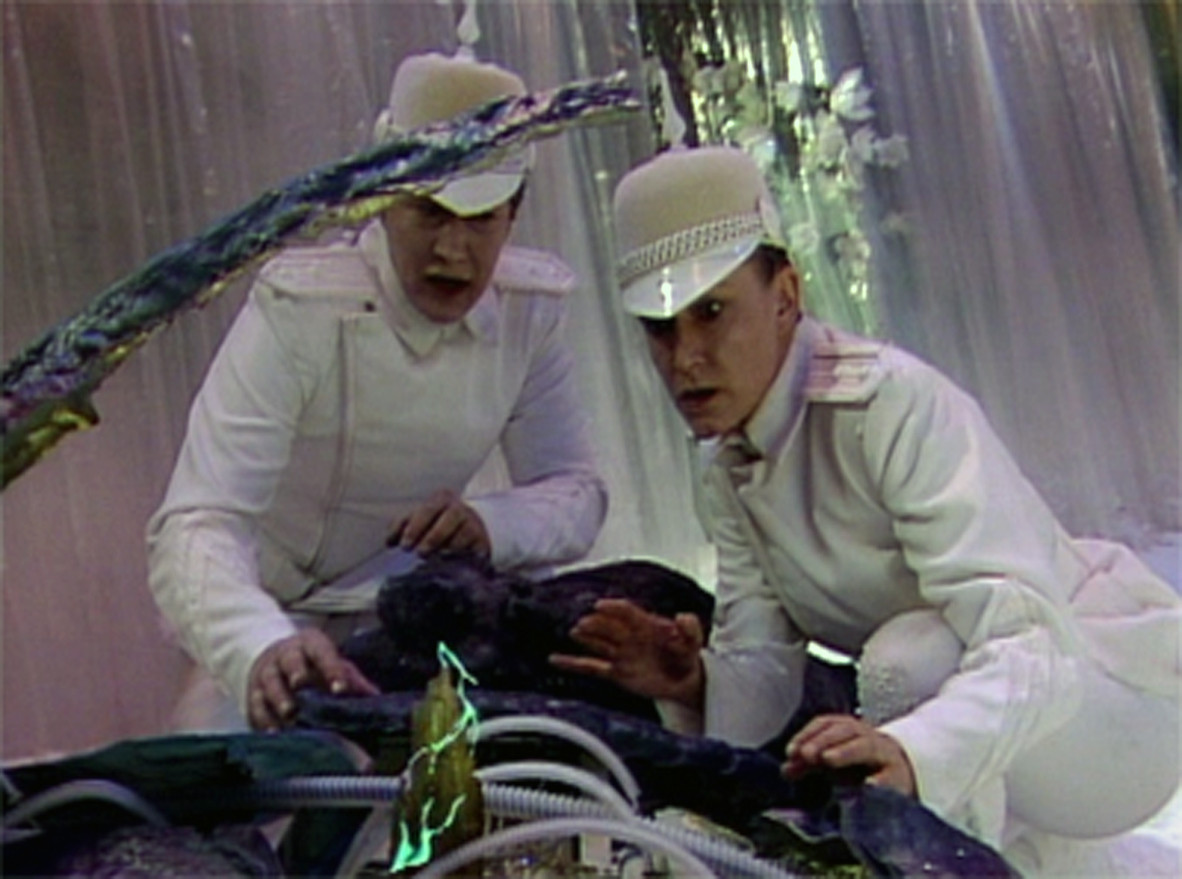Season 24 of classic Doctor Who often evokes strong reactions from fans. For some, it’s a pivotal moment of reinvention, breathing new life into a long-running series. For others, it marks a low point, a misstep in the show’s storied history. Regardless of where you stand, Doctor Who Season 24 is undeniably a season of significant change and experimentation, introducing Sylvester McCoy as the Seventh Doctor and setting the stage for a bold new direction.
Following the ambitious but divisive The Trial of a Time Lord in Season 23, Season 24 arrived with a clear mandate for change. Behind the scenes, John Nathan-Turner remained as producer, but Andrew Cartmel stepped in as script editor, bringing fresh ideas and a desire to modernize the series and appeal to a younger audience. This shift is evident in every aspect of the season, from the updated logo and music to the casting of McCoy and the introduction of new companion Ace.
However, this transition was not without its challenges. Season 24 is often characterized by a tonal inconsistency, a struggle to balance the show’s classic elements with its newfound desire for contemporary relevance. This review will delve into each story of Doctor Who Season 24, examining its strengths, weaknesses, and overall contribution to the Doctor Who legacy. We’ll explore the performances, the narratives, and the production values, offering a comprehensive look at this fascinating and often debated season.
Time and the Rani: Regeneration and Reinvention
 The Seventh Doctor's bewildered regeneration in Time and the Rani
The Seventh Doctor's bewildered regeneration in Time and the Rani
Time and the Rani serves as the regeneration story for the Sixth Doctor, Colin Baker, and the introduction of Sylvester McCoy as the Seventh. The story, penned by Pip and Jane Baker, sees the Doctor regenerating due to injuries sustained in a Rani-induced attack. The Rani, played with theatrical flair by Kate O’Mara, is a renegade Time Lord scientist who seeks to exploit the inhabitants of the planet Lakertya for her twisted experiments.
The narrative is fast-paced and action-oriented, throwing the newly regenerated and amnesiac Doctor straight into the thick of things. McCoy’s initial portrayal is deliberately confused and clownish, a stark contrast to the more bombastic Sixth Doctor. This story sets the stage for the Seventh Doctor’s era, hinting at the manipulative and strategic nature that would become more prominent in later seasons.
However, Time and the Rani is often criticized for its perceived silliness and over-the-top performances. Bonnie Langford’s Mel Bush, already established as a screamer, is pushed to even greater extremes, and the Rani’s schemes sometimes veer into pantomime territory. Despite these criticisms, the story showcases impressive set design and special effects for its time, and Keff McCulloch’s score, while divisive, attempts to give the series a more contemporary sound. Time and the Rani is a flawed but necessary story, marking the beginning of a new chapter for Doctor Who.
Paradise Towers: Social Commentary in a Sci-Fi Setting
 The Kangs and the Caretakers in Paradise Towers
The Kangs and the Caretakers in Paradise Towers
 The Chief Caretaker Richard Briers in Paradise Towers
The Chief Caretaker Richard Briers in Paradise Towers
 Kang leader Pex in Paradise Towers
Kang leader Pex in Paradise Towers
Paradise Towers, written by Stephen Wyatt, is a significant step up in quality and ambition. Loosely inspired by J.G. Ballard’s High-Rise, the story transports the Doctor and Mel to the titular Paradise Towers, a massive apartment complex where society has broken down. The Towers are divided into warring factions of gangs known as Kangs and patrolled by robotic Caretakers, all under the control of the mysterious Chief Caretaker, played with memorable comedic intensity by Richard Briers.
Paradise Towers is a story rich in social commentary, exploring themes of societal decay, class division, and the dangers of unchecked authority. The Kangs, predominantly female, are portrayed as rebellious and resourceful, offering a stark contrast to the oppressive Caretakers. The story’s visual design is effective in its simplicity, using studio-bound sets to create a claustrophobic and unsettling atmosphere.
While the comedic elements, particularly Briers’ performance, can sometimes overshadow the darker themes, Paradise Towers is a story with a strong identity and a unique vision. It demonstrates Andrew Cartmel’s influence in bringing more edgy and unconventional narratives to Doctor Who. Many consider Paradise Towers to be a highlight of Season 24 and a story that showcases the potential of the Seventh Doctor’s era.
Delta and the Bannermen: A 1950s Holiday Camp Adventure
 Delta and the Bannermen's 1950s setting
Delta and the Bannermen's 1950s setting
 Ray, the biker companion possibility in Delta and the Bannermen
Ray, the biker companion possibility in Delta and the Bannermen
 Ken Dodd as the Toll Keeper in Delta and the Bannermen
Ken Dodd as the Toll Keeper in Delta and the Bannermen
Delta and the Bannermen, written by Malcolm Kohll, takes a surprising turn, transporting the Doctor and Mel to a Welsh holiday camp in 1959. The story involves Delta, the Chimeron queen, fleeing her planet with her newborn infant, pursued by the ruthless Bannermen. The 1950s setting provides a vibrant and nostalgic backdrop, contrasting sharply with the sci-fi elements of the plot.
This story is notable for its lighthearted tone and its embrace of 1950s culture, complete with rock and roll music and period costumes. The casting of comedian Ken Dodd as the Toll Keeper adds a quirky and memorable element, although some critics found it jarring. Sara Griffiths as Ray, a biker who befriends the Doctor, was considered as a potential companion, and her strong performance is a highlight of the story.
However, Delta and the Bannermen also suffers from budgetary constraints, particularly in the depiction of the Bannermen’s costumes and technology. Keff McCulloch’s music is particularly prominent and, for some, overwhelming in this story. Despite its flaws, Delta and the Bannermen is a fun and entertaining adventure that offers a unique and unexpected diversion within Season 24. It showcases the season’s willingness to experiment with different genres and settings.
Dragonfire: Introducing Ace and Exploring Iceworld
 Ace's dramatic entrance in Dragonfire
Ace's dramatic entrance in Dragonfire
 Kane, the villain of Dragonfire
Kane, the villain of Dragonfire
 Sabalom Glitz returns in Dragonfire
Sabalom Glitz returns in Dragonfire
Dragonfire, written by Ian Briggs, is often considered the strongest story of Season 24 and a pivotal moment for the Seventh Doctor’s era. It introduces Ace, played by Sophie Aldred, a dynamic and streetwise teenager from Perivale who becomes the Doctor’s companion. The story is set on Iceworld, a trading colony built into a glacier on the dark side of the planet Svartos, where the villainous Kane seeks the legendary Dragonfire treasure.
Dragonfire is a visually impressive story, with striking sets and costumes that create a memorable alien environment. Edward Peel delivers a chilling performance as Kane, and Tony Selby returns as the roguish Sabalom Glitz, adding a familiar face to the narrative. Ace’s introduction is impactful, establishing her as a proactive and compelling character, a stark contrast to previous companions.
The story draws inspiration from Alien in its suspenseful atmosphere and creature design, although some aspects, like the ANT-hunt, suffer from stagey execution. Despite some pacing issues and over-lighting, Dragonfire is praised for its character development, strong dialogue, and the establishment of key elements that would define the McCoy era. The cliffhanger ending, with Ace joining the Doctor, marks the beginning of a dynamic and influential companion relationship.
Season 24 Blu-ray Collection: Bonus Features and Retrospective
 The Season 24 Blu-ray Collection cast reunion
The Season 24 Blu-ray Collection cast reunion
 Behind the Sofa extra feature on the Season 24 Blu-ray
Behind the Sofa extra feature on the Season 24 Blu-ray
 Sylvester McCoy interview on the Season 24 Blu-ray
Sylvester McCoy interview on the Season 24 Blu-ray
The Blu-ray release of Doctor Who Season 24, part of the Collection series, is a treasure trove for fans. It boasts extended versions of all four stories, offering additional scenes and insights into the production process. The raw, unedited footage provides a fascinating glimpse behind the scenes, although it may be overwhelming for casual viewers.
The Behind the Sofa feature, showcasing reactions from Sylvester McCoy, Bonnie Langford, Sophie Aldred, and other Doctor Who alumni, is a highlight, offering entertaining and insightful commentary on the episodes. Matthew Sweet’s in-depth interview with Sylvester McCoy is another standout, exploring the actor’s life and career both inside and outside of Doctor Who.
The documentary Here’s to the Future provides a comprehensive overview of the making of Season 24, featuring contributions from cast and crew. However, as with many historical accounts, conflicting memories and perspectives emerge, adding to the complex and sometimes contradictory narrative surrounding this era of Doctor Who. The Blu-ray collection serves as a valuable resource for understanding and appreciating Doctor Who Season 24 in its full context.
Conclusion: A Season of Transition and Transformation
Doctor Who Season 24 is undeniably a season of transition. It represents a conscious effort to revitalize the series, to make it more accessible to younger audiences, and to embrace new narrative and stylistic directions. While the season is uneven in quality, with stories ranging from the flawed but energetic Time and the Rani to the stronger and more ambitious Dragonfire and Paradise Towers, it lays the groundwork for the acclaimed seasons that would follow.
The introduction of Sylvester McCoy as the Seventh Doctor and Sophie Aldred as Ace are key achievements of Season 24. McCoy’s portrayal, while initially hesitant, evolves into a complex and compelling Doctor, and Ace quickly establishes herself as one of the most popular and influential companions of the classic era.
Ultimately, Doctor Who Season 24 is a season that deserves re-evaluation. While it may not be everyone’s favorite, it is a crucial chapter in the show’s history, marking a turning point and paving the way for the creative resurgence of the late 1980s. For fans seeking to understand the evolution of Doctor Who, Season 24 is an essential and fascinating journey.


